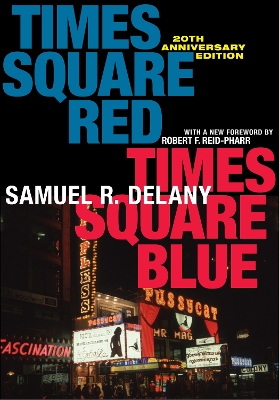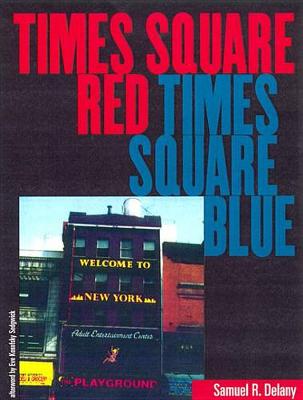Sexual Cultures
3 total works
Times Square Red, Times Square Blue 20th Anniversary Edition
by Samuel R. Delany
Twentieth anniversary edition of a landmark book that cataloged a vibrant but disappearing neighborhood in New York City
In the two decades that preceded the original publication of Times Square Red, Times Square Blue, Forty-second Street, then the most infamous street in America, was being remade into a sanitized tourist haven. In the forced disappearance of porn theaters, peep shows, and street hustlers to make room for a Disney store, a children’s theater, and large, neon-lit cafes, Samuel R. Delany saw a disappearance, not only of the old Times Square, but of the complex social relationships that developed there.
Samuel R. Delany bore witness to the dismantling of the institutions that promoted points of contact between people of different classes and races in a public space, and in this hybrid text, argues for the necessity of public restrooms and tree-filled parks to a city's physical and psychological landscape.
This twentieth anniversary edition includes a new foreword by Robert Reid-Pharr that traces the importance and continued resonances of Samuel R. Delany’s groundbreaking Times Square Red, Times Square Blue.
If one street in America can claim to be the most infamous, it is surely 42nd Street. Between Seventh and Eighth Avenues, 42nd Street was once known for its peep shows, street corner hustlers and movie houses. Over the last two decades the notion of safety-from safe sex and safe neighborhoods, to safe cities and safe relationships-has overcome 42nd Street, giving rise to a Disney store, a children's theater, and large, neon-lit cafes. 42nd Street has, in effect, become a family tourist attraction for visitors from Berlin, Tokyo, Westchester, and New Jersey's suburbs.
Samuel R. Delany sees a disappearance not only of the old Times Square, but of the complex social relationships that developed there: the points of contact between people of different classes and races in a public space. In Times Square Red, Times Square Blue, Delany tackles the question of why public restrooms, peepshows, and tree-filled parks are necessary to a city's physical and psychological landscape. He argues that starting in 1985, New York City criminalized peep shows and sex movie houses to clear the way for the rebuilding of Times Square. Delany's critique reveals how Times Square is being "renovated" behind the scrim of public safety while the stage is occupied by gentrification.
Times Square Red, Times Square Blue paints a portrait of a society dismantling the institutions that promote communication between classes, and disguising its fears of cross-class contact as "family values." Unless we overcome our fears and claim our "community of contact," it is a picture that will be replayed in cities across America.
Delany's critique reveals how Times Square is being "renovated" behind the scrim of public safety while the stage is occupied by gentrification. Times Square Red, Times Square Blue paints a portrait of a society dismantling the institutions that promote communication between classes, and disguising its fears of cross-class contact as "family values." Unless we overcome our fears and claim our "community of contact," it is a picture that will be replayed in cities across America.


